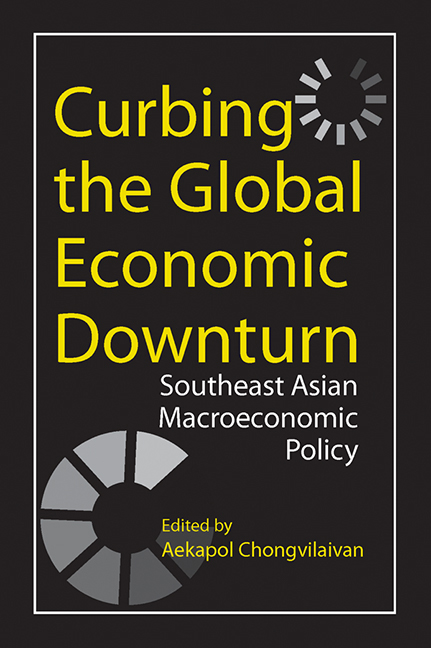Book contents
- Frontmatter
- Contents
- Acknowledgements
- Introduction
- List of Contributors
- PART I Economic Fluctuations: Macroeconomic Effects and Policy Responses
- PART II Economic Co-operation in Southeast Asia
- 6 Gains from Intra- and Inter-Regional Trade and Economic Co-operation
- 7 From Economic Reform to Closer Economic Ties: Regional- and National-Level Issues
- 8 Macroeconomic Surveillance and Financial Co-operation
- Index
8 - Macroeconomic Surveillance and Financial Co-operation
from PART II - Economic Co-operation in Southeast Asia
Published online by Cambridge University Press: 21 October 2015
- Frontmatter
- Contents
- Acknowledgements
- Introduction
- List of Contributors
- PART I Economic Fluctuations: Macroeconomic Effects and Policy Responses
- PART II Economic Co-operation in Southeast Asia
- 6 Gains from Intra- and Inter-Regional Trade and Economic Co-operation
- 7 From Economic Reform to Closer Economic Ties: Regional- and National-Level Issues
- 8 Macroeconomic Surveillance and Financial Co-operation
- Index
Summary
LESSONS FROM AND RESPONSES TO THE EAST ASIAN FINANCIAL CRISIS
The East Asian financial crisis of 1997–98 provides several valuable lessons for all parties concerned, including governments, the private sector, and international financial institutions that came to the region's rescue. It highlights how vulnerable a small, open (capital account) economy is to an adverse shift of capital flows. It also demonstrates how quickly investors' confidence can erode and how their panic can spread contagion to neighbouring countries. The international financial rescue of 1997–98 came in slightly too late, and its initial liquidity support was too small to provide a sufficient cushion for the magnitude of capital outflows. The rescue consequently failed to calm the market, resulting in continued outflows of capital and depreciating exchange rates. Policy prescriptions also failed to recognize the negative effects of austerity measures imposed on the already worsening economies and the welfare of their people, plunging crisis-affected countries deeper into a recession. As noted by Bird and Rajan (2001), there exists a trade-off between the severity of adjustment in the short run and the availability of international liquidity in the event of a crisis. In particular, the shortage of liquidity led to a quicker and more intensive economic adjustment that resulted in much larger output losses compared with previous crises.
In August 1997, Japan, together with several ASEAN countries, proposed the idea of an Asian Monetary Fund (AMF) to provide financial support for Thailand. It aimed to raise US$50 billion to US$60 billion from six ASEAN countries, Korea, China, Hong Kong, and Taiwan, and another US$50 billion from Japan. It was designed to be independent and would take up some IMF activities, such as regional surveillance. However, the AMF proposal never got off the ground due to strong opposition from the United States and the International Monetary Fund (IMF). It was argued that such an arrangement would both create a problem of moral hazard and, in competing with the IMF, a double standard.
- Type
- Chapter
- Information
- Curbing the Global Economic DownturnSoutheast Asian Macroeconomic Policy, pp. 150 - 168Publisher: ISEAS–Yusof Ishak InstitutePrint publication year: 2010



